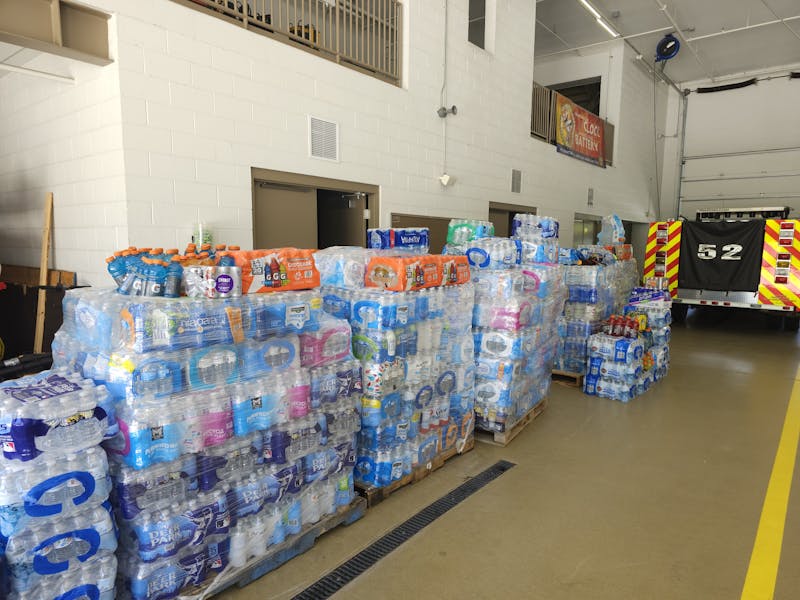On the east side of Carlisle, Pennsylvania, a room filled with telecommunications equipment hums into the evening, while its staff waits for the next call. It is not too long before a red light flashes on the screen and a dispatcher responds — “911, what is your emergency?”
Through the caller’s crying eyes the dispatcher learns that a young man attempted to kill himself. In the middle of the dispatcher asking a hundred questions, police officers are notified and en route.
Miles away, in Shippensburg, silver beams flash against a window as officers check the address and open the door. As the two enter, one draws a taser and holds it low at his side and the other bends over to speak with the young man.
Soon, two more officers arrive, and then another two, and finally two first responders with an ambulance are parked outside. They are all prepared for whatever could happen — some from training and some from experience. This time there was nothing more than a series of short conversations that inevitably convinced the young man to go to the hospital and get help.
The young man was nearly another statistic. He was nearly one of the 117 people who kill themselves in the U.S. on any given day, and nearly one of the 42,800 who will kill themselves by the end of 2016. And if he were able to go through with his plans, he would have been part of the 50 percent of people who use a firearm to commit suicide.
While the American Foundation for Suicide Prevention (AFSP) does not have any statistics for how many people attempt suicide, it does state that suicide rates have steadily climbed in the past decade to more than 12 percent.
Though white males make up the majority of victims, depression and suicide does not discriminate. There are warning signs that can tip people off when someone may be suicidal, such as depression and a change in behavior, but even these signs may be hard to detect or are not indicative of suicidal thoughts. Someone who considers suicide as an option to their problems may disguise their inner feelings, even from close family and friends.
If someone is not vocal about their emotions or thoughts of suicide, subtle behavioral differences can be recognized. These can include odd or dramatic changes in sleeping patterns, appetite, interests in hobbies and attentiveness in social situations. More obvious signs range from anxiety attacks to bursts of rage and mentioning suicide and death in conversation, according to AFSP.
The fact is everyone gets stressed and frustrated from time-to-time, and the life of a college student is certainly no exception. College is no summer camp.
Students are not away from home for just a few weeks, and failing to meet your goals at college can stonewall your plans for the future. Between classes, homework, an inability to make and keep friends and having a turbulent relationship, it is easy for stress to pile up. And, not to mention there is a financial burden waiting for students at the end of the tunnel.
While some rough moments are normal in college, and can even help prepare you for the future, it can be hard to distinguish if you or a friend is simply feeling the blues, or is severely depressed. Instead of playing the guessing game, it is always easier to just talk with that person and find out what is on his or her mind. Sometimes venting is all a person needs, but sometimes it is better to get professional help.
Thankfully, Shippensburg University has a counseling center that is free to students. Its counselors range from graduate students to professionals with decades of experience. Whether someone needs to get a few stressors off his ir her mind, or has some deep-rooted issues to resolve, there are open doors on the ground floor of Naugle Hall. Call (717) 477-1458 to schedule an appointment.
If you are faced with someone who is actively speaking about or attempting self-harm or suicide, do not hesitate to call 911. The worst that could happen is that you meet some friendly first responders, and at best you save a life.
SU is a community, and in a community it is important to look out for one another.




The Slate welcomes thoughtful discussion on all of our stories, but please keep comments civil and on-topic. Read our full guidelines here.